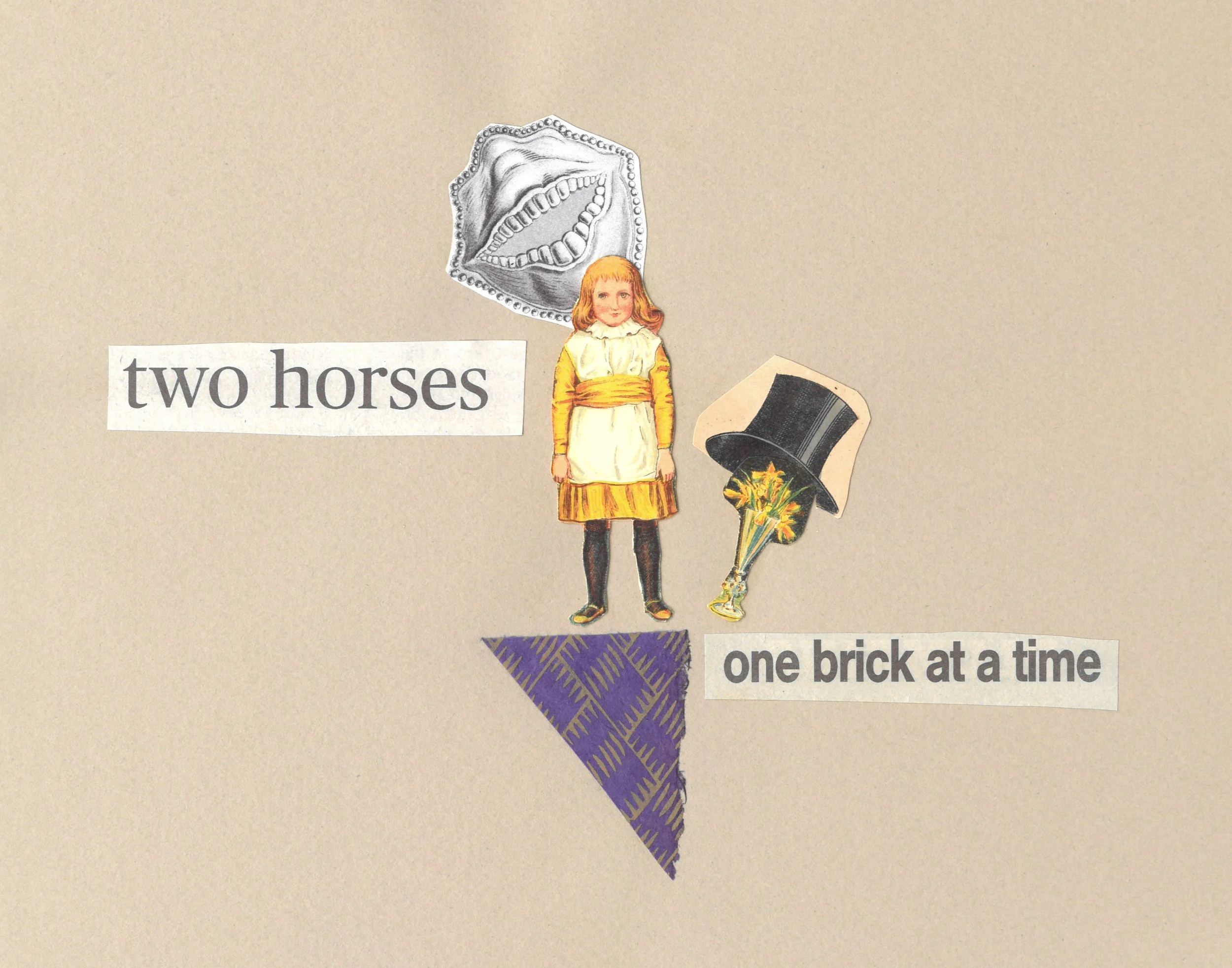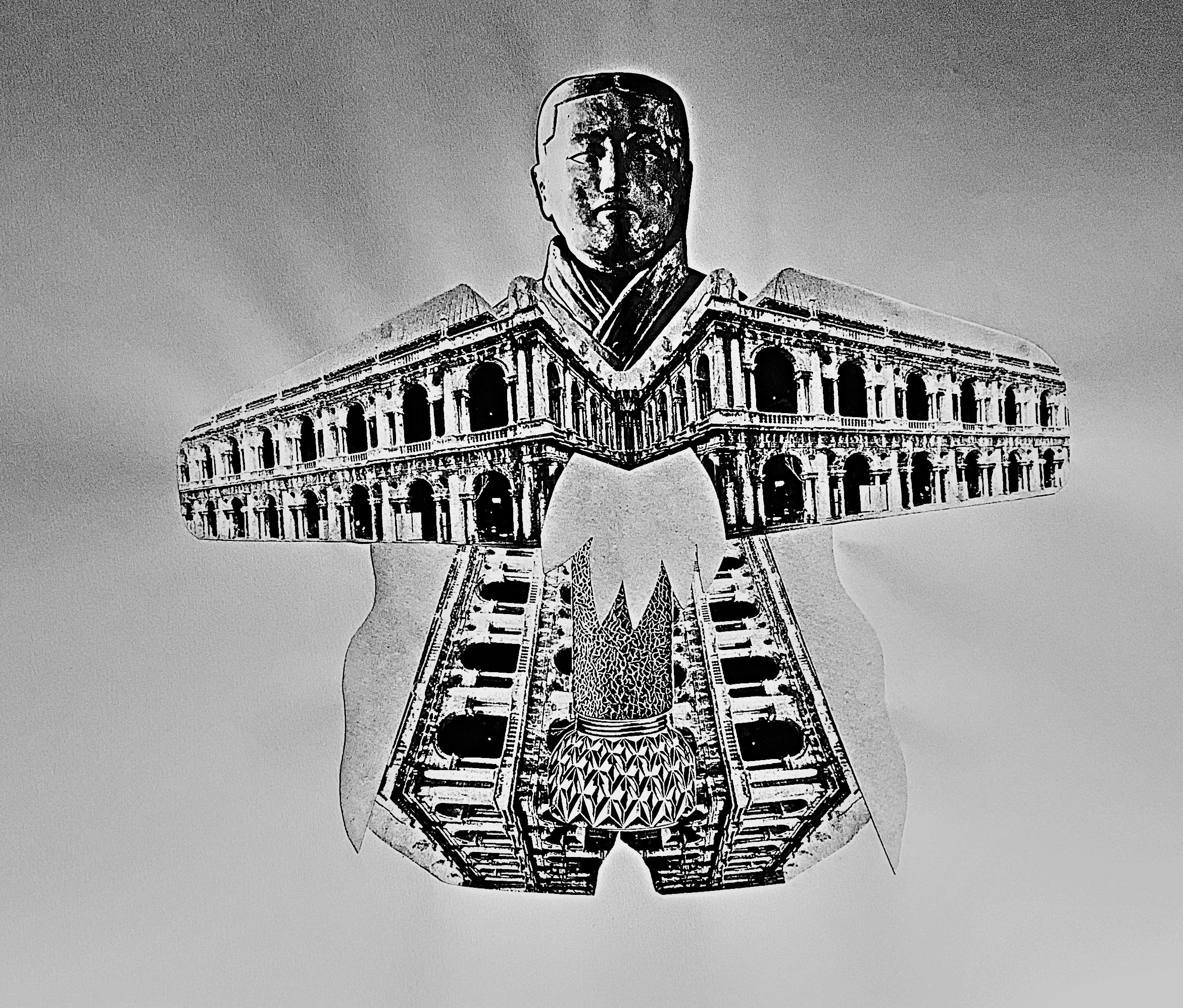Two Horses, One Brick at a Time
I think of collage as a process in which the inner world is configured with some bits of the outer world in a way that allows for a reconfiguration of both, within limits. The limits are set by the materiality of the pieces, since each element in the collage is a physical thing, a piece of paper or card, of which I usually have only a single example. These pieces can be cut, combined and covered, but not remade, and once stuck down they cannot be unstuck. Each piece is a bit of reality which has had its own separate life before reaching me: they are not figments of imagination, but real objects whose reality has to be respected; they are manipulable only to a degree. And if you wanted total freedom, endlessly manipulable material, you wouldn’t choose collage.
The practical process involves a relatively undirected play with elements, something like a ‘free association’ between what is in front of you. But of course what is in front of you is related, more or less consciously, more or less subliminally, to what is inside you – freely associated with the contents of your mind.
I am primarily a writer, and collage is a hobby-horse and procrastination activity as well as an artistic method that relates fairly closely to some aspects of my literary work. For many years I have used ‘cut-ups’ to produce the first germs of poems, or indeed to generate complete poems. Existing texts are cut up, word by word, and recombined in a way that is not too purposive but open to surprising juxtapositions. The technique is associated with William S. Burroughs and known to many (including me) via David Bowie, who was filmed demonstrating the process for a 1974 documentary (Cracked Actor).
Cut-ups and collage provide both hard limits and great freedom, especially if you can avoid deliberately shepherding the ‘meaning’ towards a set goal. Both techniques allow for a less conscious arrival at meaning. Both are a little like divination.





